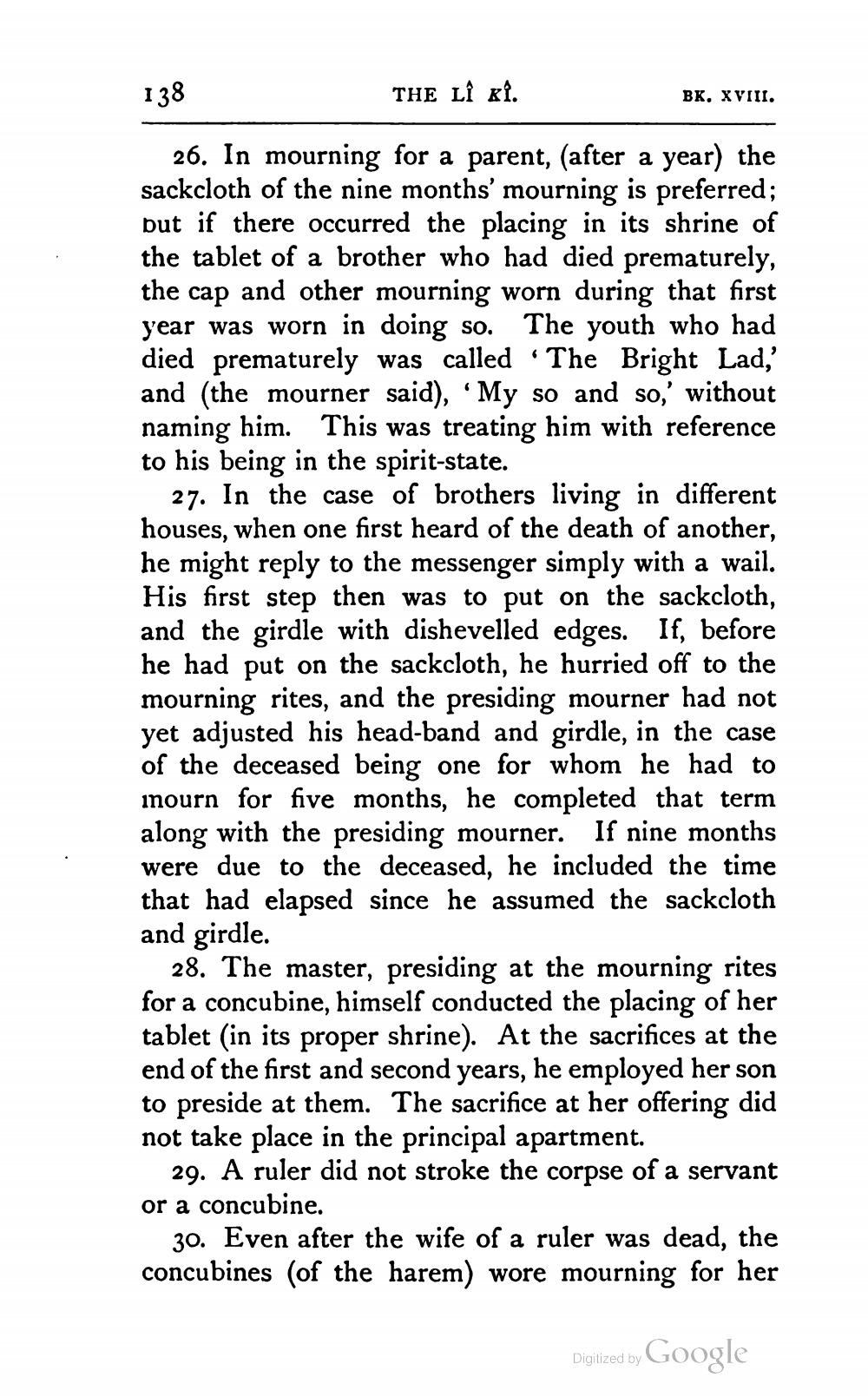________________
138
THE LI KI.
26. In mourning for a parent, (after a year) the sackcloth of the nine months' mourning is preferred; but if there occurred the placing in its shrine of the tablet of a brother who had died prematurely, the cap and other mourning worn during that first year was worn in doing so. The youth who had died prematurely was called 'The Bright Lad,' and (the mourner said), 'My so and so,' without naming him. This was treating him with reference to his being in the spirit-state.
BK. XVIII.
27. In the case of brothers living in different houses, when one first heard of the death of another, he might reply to the messenger simply with a wail. His first step then was to put on the sackcloth, and the girdle with dishevelled edges. If, before he had put on the sackcloth, he hurried off to the mourning rites, and the presiding mourner had not yet adjusted his head-band and girdle, in the case of the deceased being one for whom he had to mourn for five months, he completed that term along with the presiding mourner. If nine months were due to the deceased, he included the time that had elapsed since he assumed the sackcloth and girdle.
28. The master, presiding at the mourning rites for a concubine, himself conducted the placing of her tablet (in its proper shrine). At the sacrifices at the end of the first and second years, he employed her son to preside at them. The sacrifice at her offering did not take place in the principal apartment.
29. A ruler did not stroke the corpse of a servant or a concubine.
30. Even after the wife of a ruler was dead, the concubines (of the harem) wore mourning for her
Digitized by
Google




